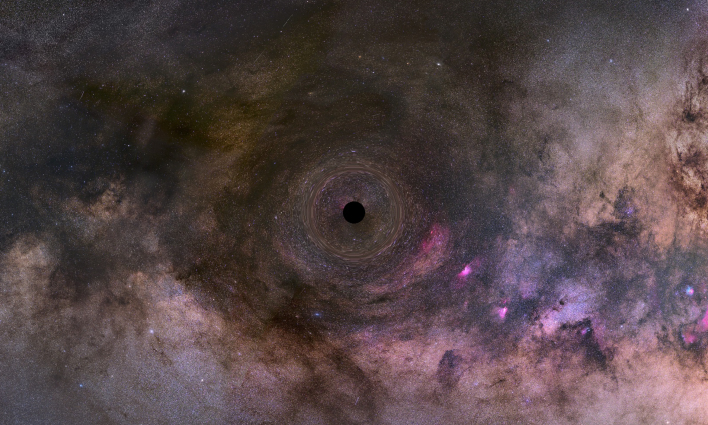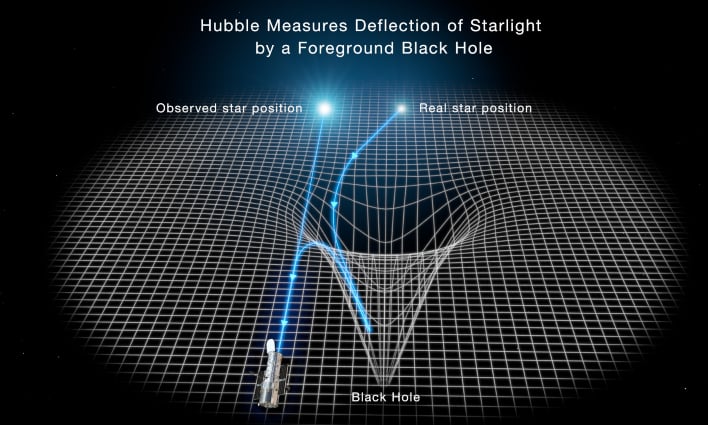Astronomers Just Discovered A Ghost Blackhole That’s Roaming Our Milky Way

As the James Webb Space Telescope nears full operational readiness, the Hubble telescope is not taking any time off. One of its latest discoveries is a black hole which lies about 5,000 light-years away, in the Carina-Sagittarius spiral arm of our very own Milky Way galaxy. Even though astronomers estimate that there are 100 million black holes that roam the Milky Way, this is the first that has been conclusively identified as an isolated black hole.
Black holes originate from rare, monstrous stars that make up less than one-thousandth of the galaxy's stellar population, and are at the very least 20 times more massive than our Sun, according to a recent NASA blog post. As the stars explode, they become supernovae, and the remaining core is crushed by gravity into the resulting black hole. Some detonations are not perfectly symmetrical, however, and the black holes find themselves careening through the galaxy like a "blasted cannonball".
These wayward black holes do not emit any light, and therefore cannot be detected by a telescope. However, a black hole warps space, which in turn deflects and intensifies starlight from anything that briefly lines up exactly behind it. Ground-based telescopes search for any tell-tale signs of these occurrences and then Hubble is directed to follow-up.
The first noticeable attribute lied in the black hole's signature which was unique among other microlensing events. The extreme gravity of the black hole will have a duration of the lensing event for over 200 days. If the object were instead a foreground star, it would have caused a transient color change in the starlight measured due to the foreground and background stars momentarily blending together. No color change was detected, however.
Hubble was then utilized to measure the amount of deflection of the background star's image by the black hole. To give an idea of how precise Hubble is, the star's image was offset from where it would normally be by about a milliarcsecond. That is like measuring the diameter of a 25-cent coin in Los Angeles as seen from New York City.
Sahu's team estimated that the black hole weighs seven solar masses. Lam's team reported a slightly lower mass range, which means it could be either a neutron star or a black hole. Lam's team found the mass to be between 1.6 and 4.4 times that of the Sun, which places the object at the high end as a black hole, and at the low end as a neutron star.

Lam added, "Whatever it is, the object is the first dark stellar remnant discovered wandering through the galaxy, unaccompanied by another star."
Sahu's team estimates the isolated black hole is travelling through the galaxy at 100,000 miles per hour (160,000 kilometers per hour). This is fast enough to travel from Earth to the Moon in less than three hours.
"Astrometric microlensing is conceptually simple but observationally very tough," remarked Sahu. "Microlensing is the only technique available for identifying isolated black holes."
Finding an isolated black hole is likened to finding a needle in a haystack. It is predicted that only one in a few hundred microlensing events are caused by isolate black holes. "Detections of isolated black holes will provide new insights into the population of these objects in our Milk Way," stated Sahu.
*Edited 6/12/2022 10:10 a.m. EST: Text was changed from "This is fast enough to travel from Earth to Venus in less than three hours." to correctly state, "This is fast enough to travel from Earth to the Moon in less than three hours."
Top Illustration Credit: FECYT, IAC, NASA

